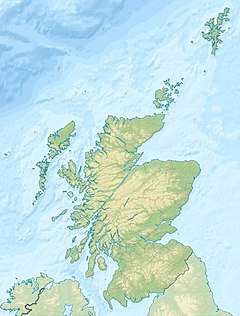| Jed Water | |
|---|---|
 The Jed Water near Jedburgh | |
| Physical characteristics | |
| Source | Carlin Tooth |
| • location | 1 mile from England in the Cheviot Hills |
| • coordinates | 55°18′55″N2°34′50″W / 55.31528°N 2.58056°W |
| Mouth | Jedfoot Bridge |
• location | north of Jedburgh, Scotland |
| Length | 21.75 miles (35.00 km) [1] |
| Depth | |
| • minimum | 0.37 metres (1.2 ft) [2] |
| • maximum | 2.33 metres (7.6 ft) (exceptionally 3.5 metres (11 ft)) [2] |
| Basin features | |
| River system | River Tweed |
The Jed Water is a river and a tributary of the River Teviot in the Borders region of Scotland.
Contents
In total the Jed Water is over 21.75 miles (35.00 km) long and it falls 1,375 feet (0.419 km). It flows into the Teviot near Jedfoot Bridge (grid reference NT660243 ) two miles north of Jedburgh. Jed Water rises from a source on Carlin Tooth 55°18′55″N2°34′50″W / 55.31528°N 2.58056°W in the Cheviot Hills where it is first known as Raven Burn. [3]
